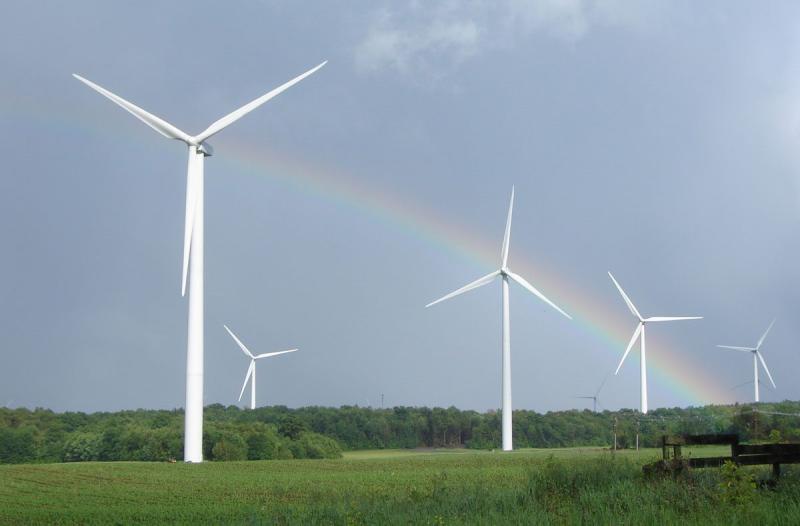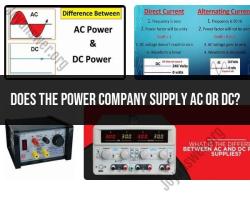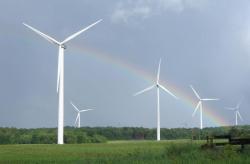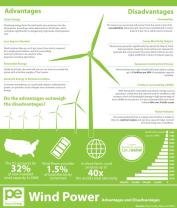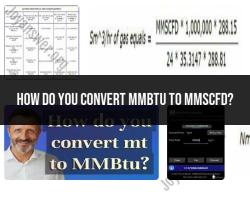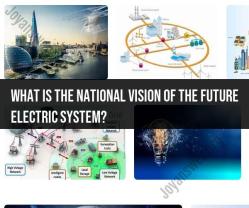How is energy transformed in a wind turbine?
Energy transformation in a wind turbine involves converting the kinetic energy of the wind into electrical energy that can be used to power homes, businesses, and other applications. The process occurs in several stages:
Wind Energy Capture:
- Wind turbines are designed with large rotor blades that are positioned to face into the wind. When the wind blows, it imparts kinetic energy to the rotor blades.
Rotor Blades:
- The kinetic energy of the wind causes the rotor blades to rotate. The design and positioning of the blades are crucial for capturing as much energy as possible.
Rotational Kinetic Energy:
- As the blades spin, they gain rotational kinetic energy. The rotation drives the main shaft of the wind turbine.
Gearbox:
- In some wind turbines, there is a gearbox that increases the rotational speed of the main shaft to optimize the efficiency of the generator. In other designs, especially in modern direct-drive turbines, there is no gearbox.
Generator:
- The main shaft is connected to a generator. Inside the generator, the mechanical energy is transformed into electrical energy through the principles of electromagnetic induction. The generator contains a rotor and a stator with coils of wire. As the rotor spins, it creates a changing magnetic field, inducing an electric current in the coils of the stator.
Electrical Energy:
- The electrical energy produced in the generator is typically in the form of alternating current (AC). This electrical energy is then conditioned and converted to the desired voltage and frequency to match the electrical grid or the specific application.
Grid Connection:
- In most cases, the electrical energy generated by the wind turbine is transmitted through power lines to the electrical grid. This energy can be distributed and used to power homes, businesses, and industries.
Energy Storage (Optional):
- In some cases, excess energy generated by the wind turbine can be stored in batteries or other energy storage systems for use when the wind is not blowing.
Inverter (if needed):
- In cases where the wind turbine generates direct current (DC) but the grid or application requires alternating current (AC), an inverter is used to convert the energy from DC to AC.
Grid Integration:
- Wind turbines are typically part of a larger wind farm. These wind farms are connected to the electrical grid, and the electricity generated is integrated into the grid's supply.
Energy transformation in a wind turbine is a highly efficient process that allows the kinetic energy of the wind to be converted into clean, renewable electrical energy. Wind power contributes to reducing greenhouse gas emissions and diversifying the energy mix, making it an important component of sustainable and environmentally friendly energy generation.
Exploring the transformation of wind energy into electricity in a turbine
Wind turbines are marvels of engineering, harnessing the power of the wind to generate clean and renewable electricity. The transformation of wind energy into electricity involves a fascinating interplay of aerodynamic principles, mechanical motion, and electrical induction. Let's delve into the intricacies of this process and uncover how wind turbines convert the kinetic energy of wind into usable electrical power.
Harnessing the Wind's Kinetic Energy
The journey of wind energy to electricity begins with the interaction of wind blades with the moving air. As wind flows over the blades, it creates lift, similar to the force that keeps airplanes airborne. This lift force, acting on the blades, causes them to rotate, and this rotational motion is the key to generating electricity.
The Role of the Rotor
The rotating blades, collectively known as the rotor, form the heart of a wind turbine. The rotor is typically mounted on a tall tower to capture wind at higher speeds, where the energy density is greater. As the wind turns the rotor, the rotational motion is transferred to a central shaft, which acts as the conduit for energy transfer.
Converting Mechanical Energy to Electricity: The Role of the Generator
At the core of the wind turbine lies the generator, the electrical counterpart to the rotor's mechanical energy. The generator is a device that converts rotational motion into electrical energy through a process called electromagnetic induction.
Inside the generator, coils of wire are arranged in a specific pattern within a magnetic field. When the rotor turns, it causes the coils to rotate within the magnetic field. This movement of the coils relative to the magnetic field induces an electrical current in the wires.
From Turbine to Grid: Transmission and Distribution
The electrical energy generated by the wind turbine is not directly usable in homes or businesses. It first needs to be transformed and transmitted to the power grid, which acts as a network of interconnected power lines that distribute electricity to consumers.
Transformers are used to step up the voltage of the generated electricity, making it suitable for long-distance transmission through high-voltage power lines. These power lines carry the electricity from wind farms to substations, where it is further transformed and distributed to homes and businesses.
The Future of Wind Energy
Wind energy is rapidly becoming a significant player in the global energy landscape. With advancements in technology, wind turbines are becoming more efficient and cost-effective, making them a viable alternative to traditional fossil fuel-based power plants. As the demand for clean and renewable energy continues to grow, wind energy is poised to play an increasingly important role in meeting our energy needs for the future.
